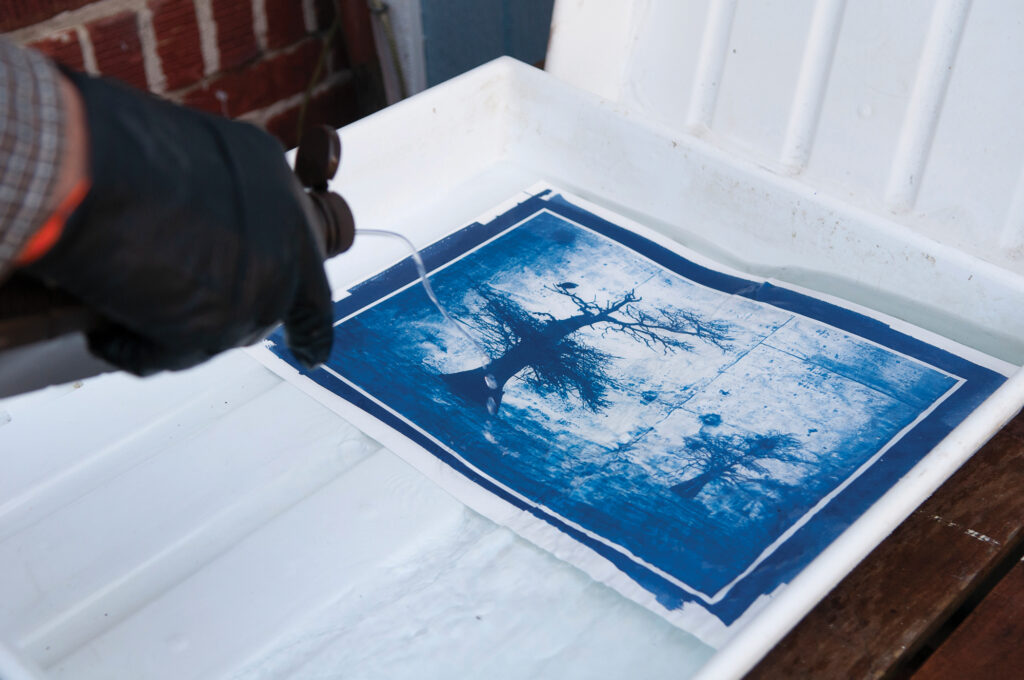Cyanotypes: How it’s Done
A step-by-step guide to creating a cyanotype
BY WBM Staff

1. Wilmington photographer Curtis Krueger mixes together equal parts ammonium ferric citrate and potassium ferricyanide, the two required chemicals for the cyanotype process.
2. The mixture of the two chemicals is then applied evenly onto watercolor paper.
3. An image of cypress trees, previously printed as a negative, is positioned on top of the dry coated watercolor paper.
4. A piece of glass is placed over the image and fastened in place.
5. In bright sunlight, it takes only four minutes to expose the image onto the coated watercolor paper.
6. After exposure is complete, the paper is then placed into a tray of water and rinsed.
7. Hydrogen peroxide may be applied for a deeper, richer, darker blue background. Krueger sometimes uses tea bags for a sepia tone.
8. The final print goes through one more rinse before being hung to dry.
